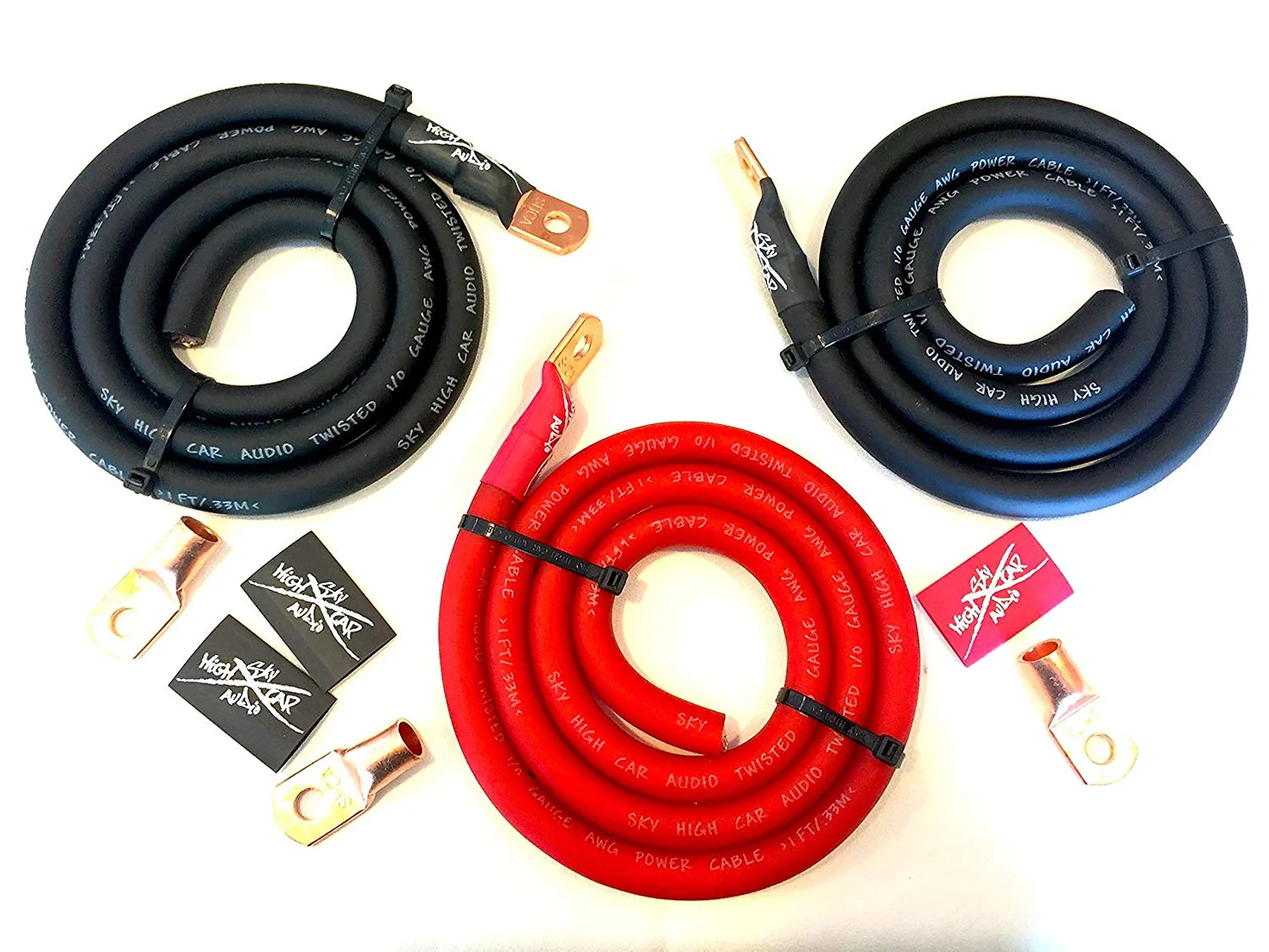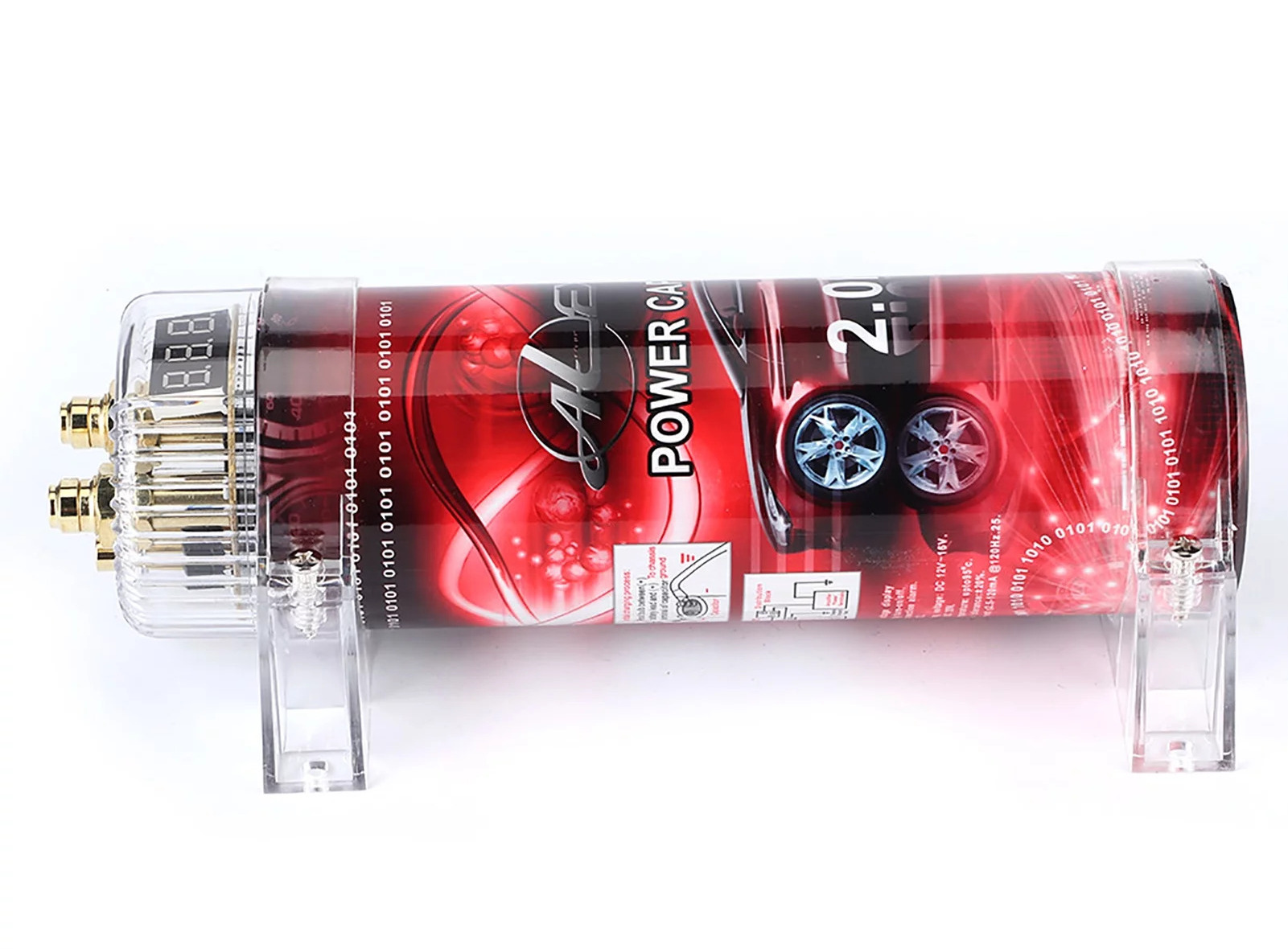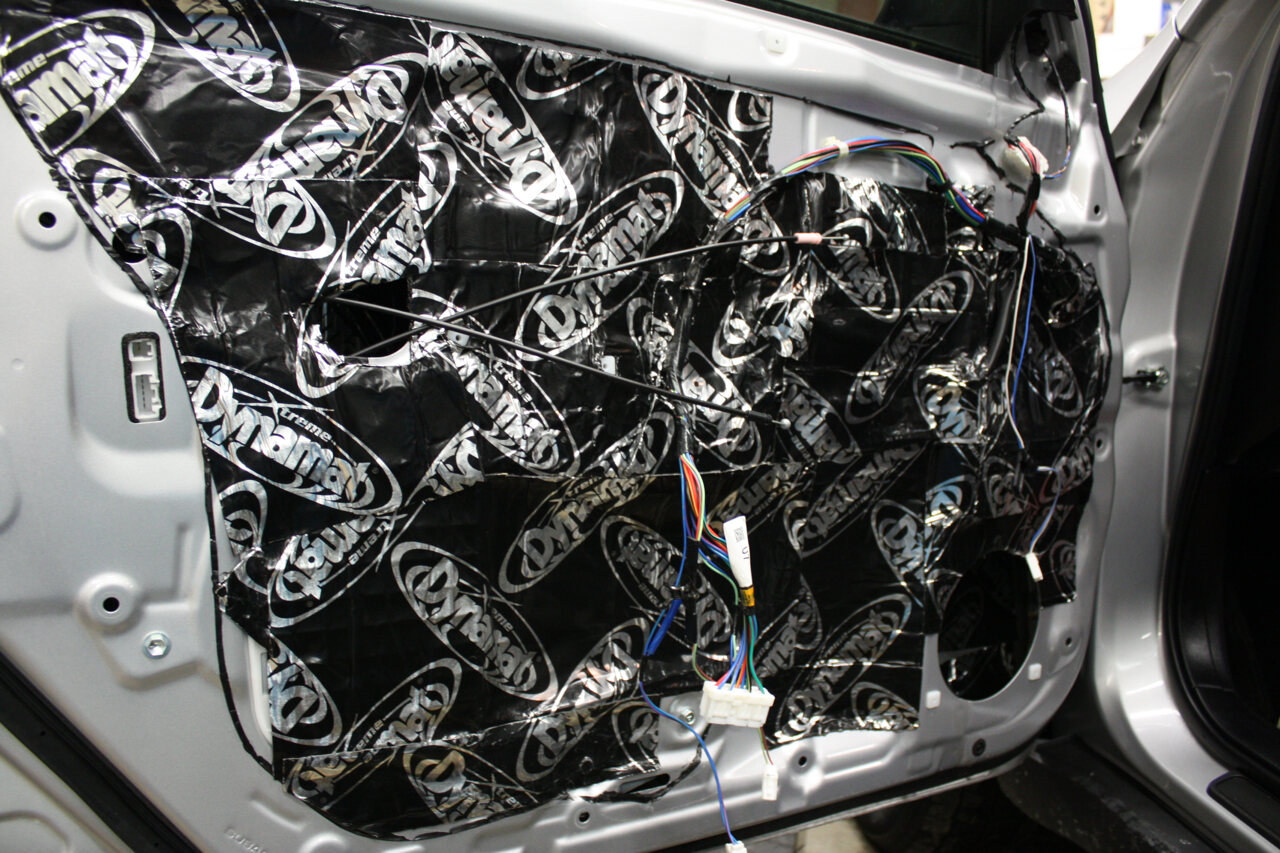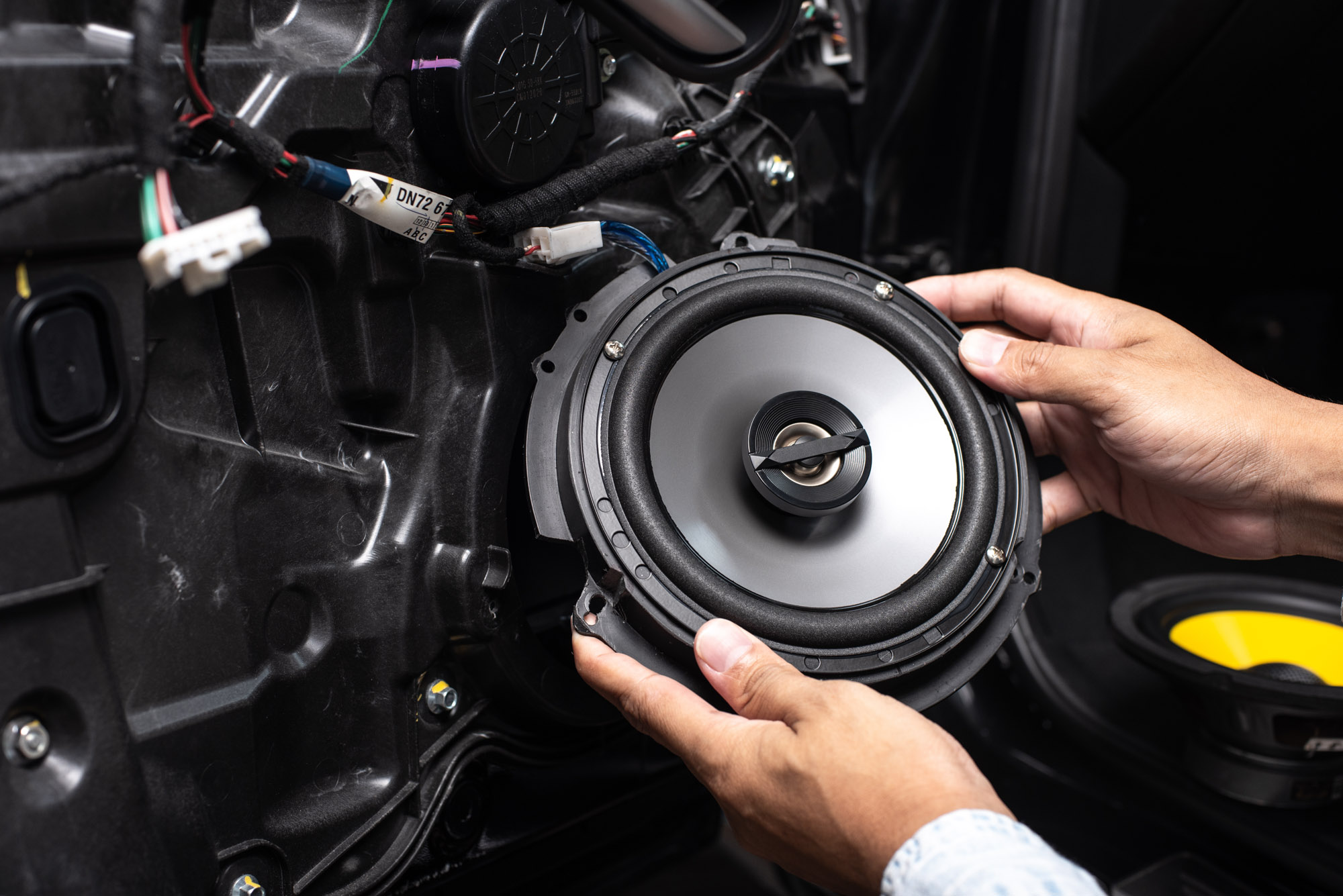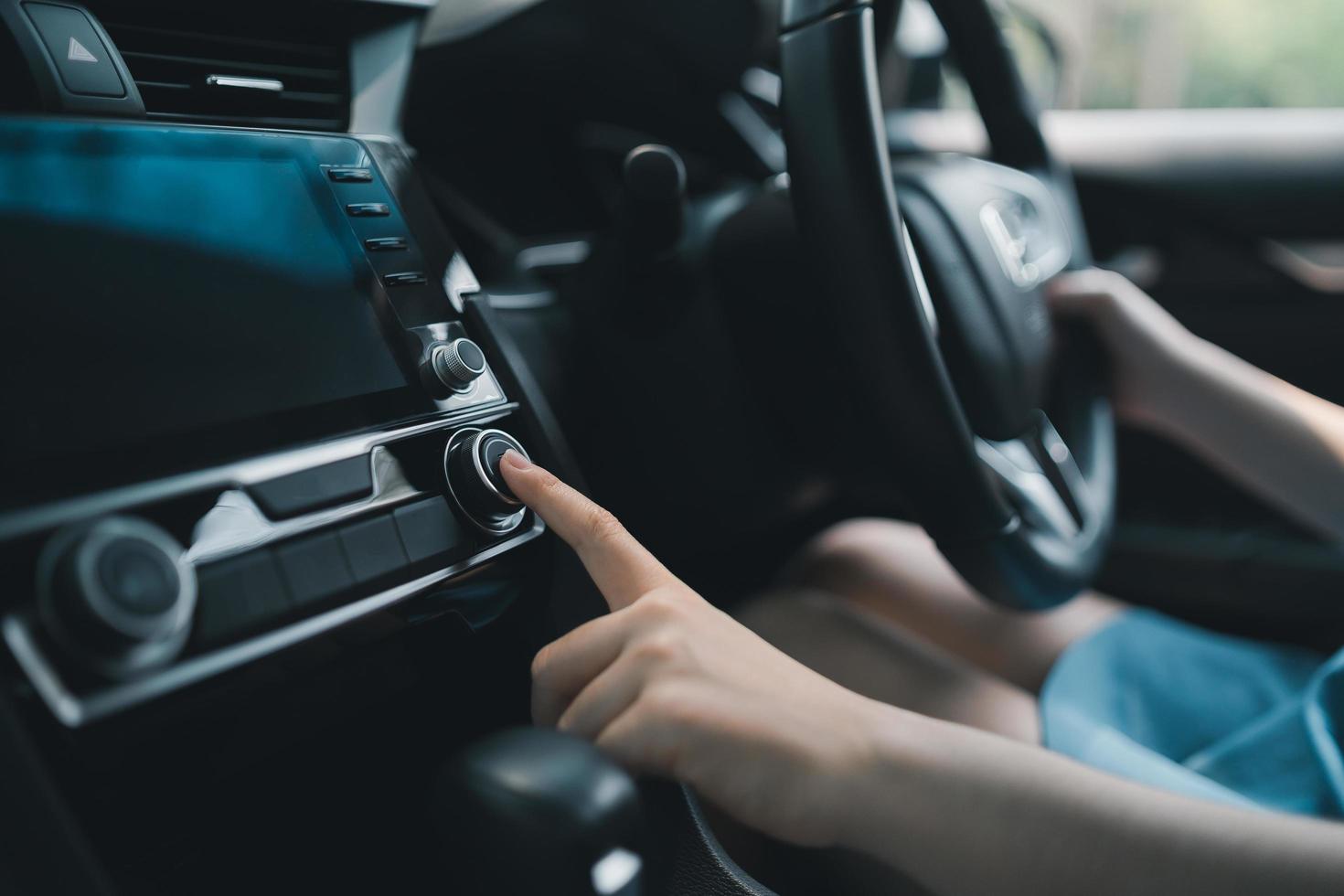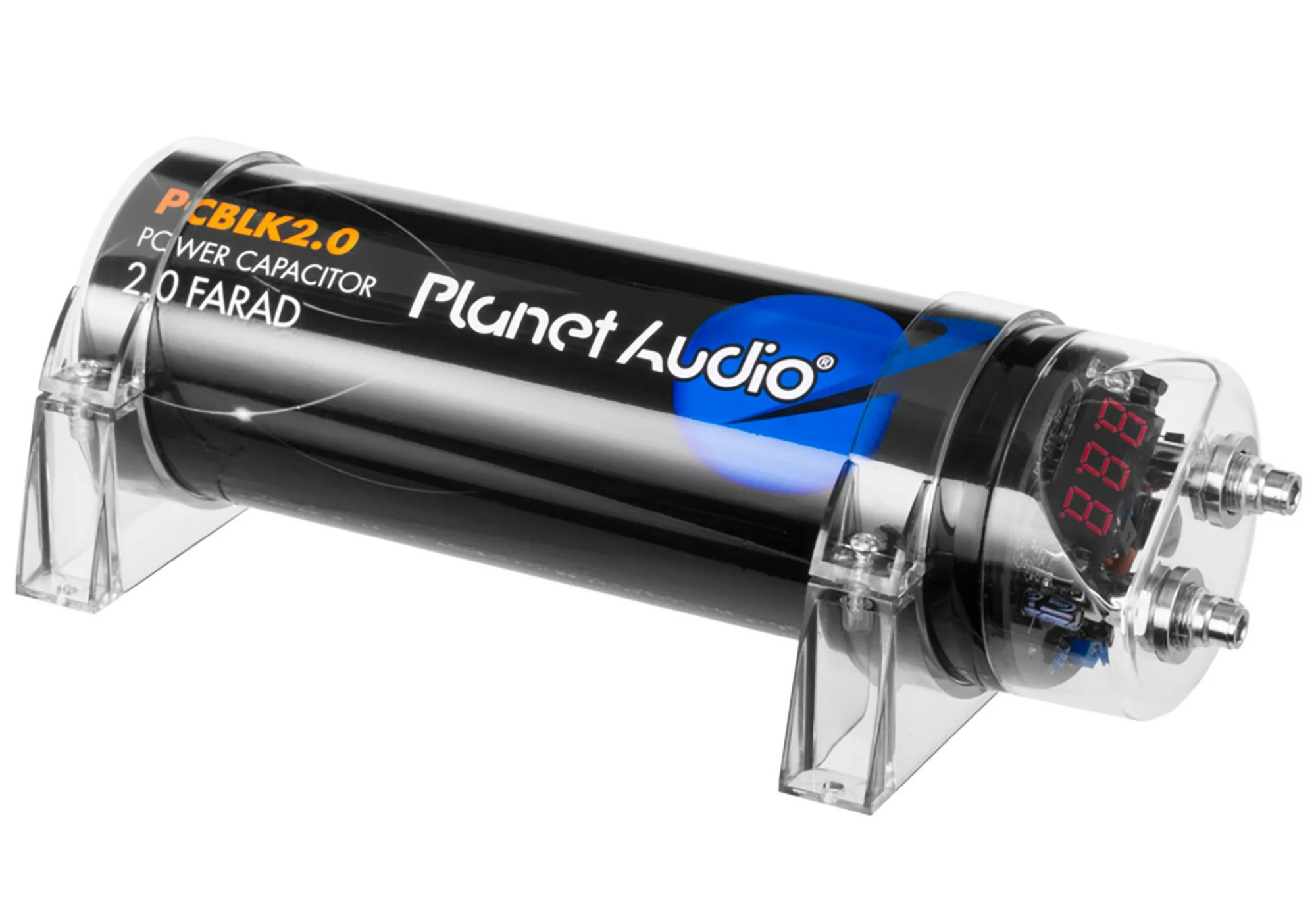Home>Devices & Equipment>Car Audio>What Are Tweeters For Car Audio


Car Audio
What Are Tweeters For Car Audio
Modified: March 11, 2024
Looking to upgrade your car audio system? Learn all about tweeters for car audio and how they can enhance your listening experience. Discover the benefits of incorporating tweeters into your car's sound system.
(Many of the links in this article redirect to a specific reviewed product. Your purchase of these products through affiliate links helps to generate commission for AudioLover.com, at no extra cost. Learn more)
Table of Contents
Introduction
Welcome to the world of car audio, where listening to your favorite tunes while cruising down the road is taken to a whole new level. Every audiophile knows that a high-quality car audio system is essential for an immersive and enjoyable driving experience. One crucial component of a car audio system is the tweeter.
Tweeters play a vital role in reproducing high-frequency sounds in your car audio setup. They are small speakers designed to handle frequencies above 2,000 Hz, which is where human hearing begins to taper off. By specializing in reproducing these higher frequencies, tweeters ensure that the music you hear is balanced, detailed, and vibrant.
While the main speakers in your car audio system handle the midrange and bass frequencies, tweeters focus on the treble, adding clarity and dimension to the overall sound. They are responsible for reproducing the shimmering cymbals, crisp vocal harmonies, and intricate musical nuances that make the listening experience so captivating.
In this article, we will explore the different types of tweeters available for car audio systems, their benefits, and factors to consider when choosing tweeters. We will also discuss how to install and properly care for tweeters to ensure their longevity and optimal performance. So, if you’re ready to dive into the world of tweeters and take your car audio setup to new heights, let’s get started.
Basic Function of Tweeters
Before diving into the different types of tweeters, it’s important to understand their basic function in a car audio system. As mentioned earlier, tweeters are responsible for reproducing high-frequency sounds, typically ranging from 2,000 Hz and above.
One of the primary purposes of tweeters is to add clarity and detail to the audio playback. They handle the intricate musical nuances, such as the crispness of vocals, the sparkle of cymbals, and the intricate details of acoustic instruments. By reproducing these high-frequency sounds accurately, tweeters contribute to a more immersive and realistic listening experience.
Tweeters also play a crucial role in achieving a balanced audio spectrum. While the main speakers handle the midrange and bass frequencies, tweeters ensure that the higher frequencies are not overshadowed. This ensures that the music sounds natural and well-rounded, without any frequency imbalance.
Another function of tweeters is to provide directionality to the sound. Due to their size and design, tweeters are capable of emitting sound waves in a focused manner. This allows them to project the high-frequency sounds more precisely towards the listener, creating a sense of depth and spatial imaging in the audio playback.
Overall, the basic function of tweeters can be summarized as follows:
- Reproduce high-frequency sounds above 2,000 Hz
- Add clarity, detail, and realism to the audio playback
- Contribute to a balanced audio spectrum
- Create directionality and spatial imaging in the sound
By integrating tweeters into your car audio system, you can elevate your listening experience by ensuring that every note and detail is faithfully reproduced, delivering a rich and immersive soundstage.
Types of Tweeters for Car Audio
When it comes to choosing tweeters for your car audio system, there are several different types to consider, each with its own unique characteristics and sonic qualities. Understanding the different types will help you make an informed decision based on your personal preferences and the type of sound you want to achieve.
Here are some of the most common types of tweeters for car audio:
- Dome Tweeters: Dome tweeters are the most popular type of tweeters found in car audio systems. They feature a soft dome-shaped diaphragm made of materials like silk, textile blends, or synthetic resins. Dome tweeters offer a smooth and balanced sound reproduction, making them suitable for various music genres. They have a wide dispersion pattern, meaning that sound is spread out over a larger area, resulting in a more enveloping soundstage.
- Horn Tweeters: Horn tweeters are designed to maximize efficiency and output. They have a cone-shaped diaphragm that is attached to a horn or waveguide. This design allows them to produce higher sound pressure levels (SPL) with lower distortion. Horn tweeters offer excellent detail and dynamics, making them ideal for those who want a more pronounced and energetic high-frequency response.
- Ribbon Tweeters: Ribbon tweeters utilize a thin strip of metal, typically aluminum, that is suspended in a magnetic field. When an electrical current flows through the strip, it vibrates, producing sound. Ribbon tweeters are known for their exceptional transient response and accuracy. They excel at reproducing delicate details and textures in music, making them a favorite among audiophiles who prioritize precise and transparent sound reproduction.
- Silk Tweeters: Silk tweeters feature a diaphragm made of silk, which offers a smooth and natural sound reproduction. They provide a warm and mellow sound signature, making them well-suited for genres like jazz, classical, and acoustic music. Silk tweeters are known for their refined treble response and ability to produce subtle nuances in the music.
While these are some of the most common types of tweeters, there are other variations available as well, such as planar magnetic tweeters and piezo-electric tweeters. Each type has its own unique sonic qualities, so it’s essential to consider your personal taste and the overall sound signature you want to achieve when choosing tweeters for your car audio system.
Dome Tweeters
Dome tweeters are one of the most popular types of tweeters used in car audio systems. They feature a soft dome-shaped diaphragm made of materials such as silk, textile blends, or synthetic resins. Dome tweeters are known for their smooth and balanced sound reproduction, making them a versatile choice for various music genres.
One of the advantages of dome tweeters is their wide dispersion pattern. This means that they can spread sound over a larger area, resulting in a more enveloping soundstage. It allows for a broader listening sweet spot, ensuring that everyone inside the car can enjoy the music equally.
The soft dome diaphragm used in these tweeters is designed to vibrate more easily, which helps reproduce high-frequency sounds with accuracy and precision. Dome tweeters are capable of handling the delicate details and shimmering harmonics present in many musical recordings.
Another benefit of dome tweeters is their ability to blend seamlessly with the midrange drivers in your car audio system. The transition between the tweeter and the midrange driver is crucial for a cohesive and balanced sound reproduction. Dome tweeters ensure that there are no jarring frequency gaps or irregularities, resulting in a smooth and natural sound signature.
When it comes to installation, dome tweeters are relatively easy to mount in your car. They are available in various sizes to fit different locations, such as flush-mount, surface-mount, or component tweeters that come as part of a separate speaker system.
Overall, dome tweeters are a popular choice for car audio enthusiasts due to their smooth and balanced sound reproduction, wide dispersion pattern, and compatibility with midrange drivers. They provide an enjoyable listening experience by accurately reproducing high-frequency details and creating an immersive soundstage within the car.
Horn Tweeters
Horn tweeters are a type of tweeter that are designed to maximize efficiency and output. They feature a cone-shaped diaphragm that is attached to a horn or waveguide. This unique design allows horn tweeters to produce higher sound pressure levels (SPL) with lower distortion, resulting in a more powerful and energetic high-frequency response.
One of the key advantages of horn tweeters is their ability to project sound over long distances. The horn or waveguide helps to amplify the sound waves and direct them in a focused manner. This means that horn tweeters can reach farther distances without losing clarity or volume, making them ideal for larger vehicles or open car environments.
Horn tweeters are known for their excellent detail and dynamics. They can reproduce high-frequency sounds with precision and accuracy, ensuring that every subtle nuance in the music is captured. This makes them well-suited for genres that emphasize intricate instrumentations, such as classical, jazz, or rock music.
Due to their high efficiency, horn tweeters are capable of delivering a more pronounced and energetic sound. They can handle high power inputs without distortion, allowing for a wider dynamic range. This means that you can crank up the volume without sacrificing the clarity and detail of the high-frequency sound reproduction.
When it comes to installation, horn tweeters may require more space compared to other tweeter types due to their cone-shaped design. However, they are available in various sizes to accommodate different mounting locations, ensuring flexibility in your car audio setup.
Overall, horn tweeters are an excellent choice for car audio enthusiasts who prioritize a powerful and detailed high-frequency response. They offer high efficiency and output, project sound over long distances, and excel at reproducing intricate musical details, making them a favorite among those who want a dynamic and energetic listening experience in their vehicle.
Ribbon Tweeters
Ribbon tweeters are a type of tweeter that utilize a thin strip of metal, typically aluminum, as their diaphragm. This strip is suspended in a magnetic field and vibrates when an electrical current flows through it, producing sound. Ribbon tweeters are highly regarded for their exceptional transient response and accuracy, making them a favorite among audiophiles.
One of the key advantages of ribbon tweeters is their ability to reproduce delicate details and textures in music. Due to the low mass and large surface area of the ribbon diaphragm, they are capable of responding to fast changes in the music signal, capturing the subtle nuances and transient attacks of instruments with great precision.
Ribbon tweeters are known for their transparent and detailed sound reproduction. They have a wide frequency response and can reproduce high-frequency sounds with remarkable accuracy. This results in a clean and natural sound signature, revealing even the most intricate elements of the music.
Another advantage of ribbon tweeters is their wide dispersion pattern. Unlike some other tweeter types that have a more focused sound projection, ribbon tweeters disperse sound over a broader area. This helps create a wider and more immersive soundstage, making the music feel more enveloping and lifelike.
It’s worth noting that ribbon tweeters are typically more fragile compared to other tweeter types. The ribbon diaphragm is delicate and requires careful handling during installation and maintenance. However, their unique sonic qualities and ability to convey the finest details in music make them a highly desired choice for those seeking a transparent and revealing listening experience in their car audio system.
When it comes to installation, ribbon tweeters are available in various sizes and forms, including flush-mount and component systems. This ensures that they can be integrated into different locations in your car, providing flexibility in your car audio setup.
In summary, ribbon tweeters are prized for their exceptional transient response, accuracy, and ability to reproduce delicate musical details. They offer a transparent and detailed sound reproduction, create a wide sound dispersion pattern, and can elevate the listening experience by capturing the finest nuances in the music.
Silk Tweeters
Silk tweeters are a popular type of tweeter found in many car audio systems. They feature a diaphragm made of silk, which offers a unique sonic signature known for its smooth and mellow sound reproduction.
One of the key advantages of silk tweeters is their ability to achieve a warm and natural sound. The silk diaphragm helps to soften and tame any harshness in the high-frequency range, resulting in a more relaxed and easy-going listening experience. This makes silk tweeters a great choice for genres like jazz, classical, and acoustic music.
Silk tweeters are known for their refined treble response. They can reproduce high-frequency sounds with a gentle and subtle touch, ensuring that the music retains its expressiveness and nuance. This makes them well-suited for capturing the intricacies of vocals and the delicate harmonics of instruments.
Another advantage of silk tweeters is their ability to handle power well. They can handle high power inputs without distortion, allowing for a wider dynamic range. This means that you can turn up the volume without losing the clarity and smoothness of the high-frequency sound reproduction.
Silk tweeters also offer a wide dispersion pattern, which helps create a more encompassing soundstage. This means that the sound is spread out over a larger area, resulting in a broader listening sweet spot and ensuring that everyone in the car can enjoy the music equally.
Installation of silk tweeters is relatively straightforward, as they are available in various sizes and mounting options. Whether you prefer flush-mount, surface-mount, or component tweeters, there is a silk tweeter solution to fit your car audio setup.
In summary, silk tweeters are appreciated for their warm and mellow sound reproduction, refined treble response, and ability to handle power well. They provide a smooth and relaxed listening experience, excel at capturing vocal nuances and instrument harmonics, and create a wide sound dispersion pattern for an immersive audio playback.
Benefits of Using Tweeters in Car Audio Systems
Integrating tweeters into your car audio system offers several benefits that significantly enhance your overall listening experience. Let’s explore some of the key advantages of using tweeters:
- Improved Clarity and Detail: Tweeters are specifically designed to handle high-frequency sounds, ensuring that the music you hear is detailed, crisp, and vibrant. They reproduce subtle nuances, such as the shimmering cymbals, delicate vocal harmonies, and intricate musical textures, adding a new level of clarity and depth to your audio playback.
- Enhanced Soundstage and Imaging: Tweeters contribute to creating a more immersive and realistic soundstage in your car. By accurately reproducing high-frequency sounds, tweeters help to localize instruments and vocals, creating a spatial and three-dimensional audio environment. This allows you to feel like you are sitting in the midst of a live performance or studio recording.
- Balanced and Natural Sound: Tweeters play a crucial role in achieving a well-balanced audio spectrum in your car audio system. By handling the high-frequency range, they ensure that the music is not overshadowed by the midrange and bass frequencies. This results in a more natural and cohesive sound reproduction, where each frequency range complements and enhances the others.
- Wide Dispersion Pattern: Many tweeters, such as dome tweeters, offer a wide dispersion pattern. This means that they spread sound over a larger area, resulting in a more enveloping soundstage. It ensures that everyone inside the car enjoys the music equally, regardless of their seating position.
- Accurate Vocal Reproduction: Whether it’s the clarity of a lead singer or the harmonies of a vocal group, tweeters excel at reproducing vocals accurately. They capture and project the subtleties of vocal performances, allowing you to hear the emotion and expression in the singer’s voice.
- Wide Range of Tweeter Types: There are various types of tweeters available, each with its own unique sonic qualities. This allows you to choose a tweeter that aligns with your personal preferences and the type of sound you want to achieve in your car audio system. Whether you prefer the smoothness of silk tweeters or the dynamic energy of horn tweeters, there is a tweeter type for every audiophile.
By incorporating tweeters into your car audio system, you can elevate the quality of your listening experience. From improved clarity and detail to enhanced soundstage and imaging, tweeters play a crucial role in delivering a more immersive, balanced, and enjoyable audio playback.
Factors to Consider When Choosing Tweeters
When selecting tweeters for your car audio system, there are several important factors to consider to ensure that you choose the right tweeters for your specific needs and preferences. Here are some key factors to keep in mind:
- Tweeter Type: Understand the different types of tweeters available, such as dome tweeters, horn tweeters, ribbon tweeters, and silk tweeters. Each type has its own unique sonic qualities, so choose one that matches your desired sound signature.
- Power Handling: Consider the power handling capabilities of the tweeters. Ensure that they can handle the power output from your car audio system without distortion or damage.
- Sensitivity: Look for tweeters with high sensitivity ratings. Higher sensitivity means that the tweeters can produce a louder sound with less power input. This is particularly important if you have a lower-powered amplifier.
- Frequency Response: Pay attention to the frequency response range of the tweeters. A wide frequency response ensures that the tweeters can accurately reproduce a broad range of high-frequency sounds.
- Mounting Options: Consider the mounting options available for the tweeters. Determine whether they can be easily installed in your car, whether you prefer flush-mount, surface-mount, or component tweeters.
- Budget: Set a budget for your tweeter purchase. There are tweeters available at various price points, so determine how much you are willing to spend and choose tweeters that offer good value for your budget.
- Personal Preferences: Consider your personal preferences and the type of sound you want to achieve. Some tweeters may have a brighter or more laid-back sound signature, so choose one that suits your listening preferences and musical taste.
It’s also recommended to audition tweeters whenever possible. Listening to different tweeters in person can give you a better understanding of their sonic characteristics and help you make an informed decision.
By considering these factors and thoroughly researching your options, you can choose tweeters that align with your preferences and ultimately enhance the sound quality and enjoyment of your car audio system.
Installation and Placement of Tweeters
Installing and properly placing tweeters in your car is crucial to achieving optimal sound quality and fidelity. Here are some important considerations for the installation and placement of tweeters:
- Choose the Right Mounting Option: Determine the best mounting option for your tweeters based on your car’s interior and your specific preferences. Common mounting options include flush-mount, surface-mount, and component tweeters that come as part of a separate speaker system. Each option has its own advantages and installation requirements.
- Positioning: Aim to position the tweeters at ear level to maximize the soundstage and imaging. Ideally, the tweeters should be directed towards the listener’s ears and angled slightly to optimize sound dispersion. This helps create a more realistic and immersive listening experience.
- Avoid Blocking: Ensure that the tweeters are not obstructed by any obstacles, such as car panels, door handles, or window frames. This can interfere with the tweeter’s sound projection and affect the overall audio quality.
- Stereo Imaging: Achieving proper stereo imaging involves installing tweeters on both the driver and passenger sides of the car. This helps create a balanced soundstage and ensures that everyone in the car can enjoy a cohesive and immersive audio experience.
- Integration with other Speakers: Pay attention to the integration of tweeters with the midrange and woofer drivers in your car audio system. Aim for a smooth transition in sound between the different speakers to ensure a well-balanced and coherent audio reproduction.
- Professional Installation: If you’re unsure about the installation process or want to ensure the best results, consider seeking professional assistance. Professional installers have the expertise and experience to handle the installation of tweeters and optimize their placement for optimal sound performance.
Remember, the proper installation and placement of tweeters can significantly impact the overall sound quality and listening experience in your car. Take the time to plan and execute the installation carefully, and don’t hesitate to seek professional help if needed.
Maintenance and Care for Tweeters
Proper maintenance and care for tweeters are essential to ensure their longevity and optimal performance. Here are some important tips to keep in mind:
- Regular Cleaning: Dust and debris can accumulate on the tweeter’s surface, affecting its performance. Use a soft, dry cloth or a small brush to gently remove any dust or dirt from the tweeter diaphragm and surrounding areas. Avoid using harsh chemicals or abrasive materials that may damage the tweeter.
- Protect from Moisture: Tweeters are sensitive to moisture, so it’s important to protect them from exposure to water or excessive humidity. If necessary, use weatherproofing techniques or consider tweeters with water-resistant properties, especially if you plan on installing them in areas prone to moisture, such as car doors.
- Check Wiring Connections: Periodically inspect the wiring connections to ensure they are secure and free from corrosion. Loose or corroded connections can lead to intermittent sound or loss of performance. If necessary, clean the connections or consult a professional for assistance.
- Monitor for Distortion: Pay attention to any signs of distortion or abnormal sound coming from the tweeters. Distortion can indicate an issue with the tweeter’s diaphragm or a signal problem. If you notice any distortion, have the tweeters inspected and repaired by a qualified technician.
- Avoid Overpowering: Be mindful of the power input to the tweeters. Excessive power can damage the tweeter’s delicate components and result in distortion or even permanent damage. Make sure the power from your amplifier or head unit is within the tweeters’ recommended power handling range.
- Protect from Physical Damage: Take precautions to avoid physical damage to the tweeters. Be careful when handling them and avoid placing objects near the tweeters that may impact or damage them, such as keys or other sharp objects.
- Regular Audio System Maintenance: In addition to caring for the tweeters, ensure that you maintain the overall health of your car audio system. Keep the system clean, regularly inspect and clean other components, and address any issues promptly.
By following these maintenance tips, you can prolong the lifespan and enhance the performance of your tweeters. Regular cleaning, protection from moisture, checking connections, monitoring for distortion, and exercising caution can go a long way in maintaining the integrity and functionality of your tweeters.
Conclusion
Tweeters play a crucial role in enhancing the sound quality and overall listening experience in a car audio system. Whether you’re a casual music lover or a dedicated audiophile, incorporating high-quality tweeters into your setup can elevate your journey on the road to a whole new level.
In this comprehensive guide, we explored the basic function of tweeters as well as the different types available, including dome tweeters, horn tweeters, ribbon tweeters, and silk tweeters. Each type has its own unique sonic characteristics, allowing you to choose the tweeters that align with your personal preferences and desired sound signature.
We also discussed the benefits of using tweeters in car audio systems, such as improved clarity and detail, enhanced soundstage and imaging, and a balanced and natural sound reproduction. Tweeters bring out the finer nuances in music, ensuring that each instrument and vocal is faithfully reproduced, allowing you to experience your favorite songs in a whole new way.
Furthermore, we explored important factors to consider when choosing tweeters, from tweeter type and power handling to sensitivity and frequency response. These considerations will help you make an informed decision and select tweeters that meet your budget and sonic preferences.
Additionally, we covered the installation and placement of tweeters, emphasizing the importance of proper positioning to maximize soundstage and imaging. We also highlighted the significance of regular maintenance and care for tweeters to ensure their longevity and optimal performance.
By integrating tweeters into your car audio system and following the tips outlined in this guide, you can transform your musical journey into an immersive and captivating experience.
So, whether you’re cruising down the open road or stuck in traffic, let the tweeters take you on a sonic adventure, bringing your favorite music to life and making every drive a memorable one.


